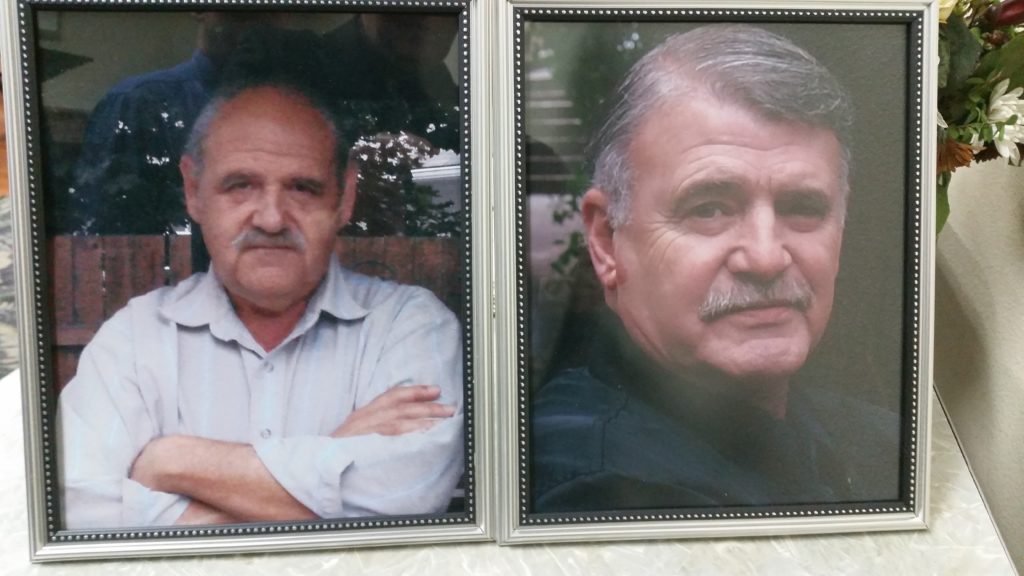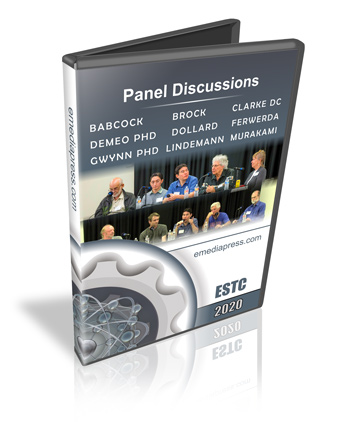Eulogy for John and Gary Bedini

Read by Peter Lindemann at the Memorial Service on November 11, 2016
John and Gary worked their whole professional lives together. Every day, for 42 years, they were both there, working side by side.
Their first joint business venture was Bedini Electronics, started in 1974. This move, to start their own business, became necessary when John was fired from his job for developing an audio amplifier circuit that was better than his employer’s designs.
John took on the role of “resident wizard.” His company title was President, but he was really the Director of Research and Product Development. From that day on, John was freed to let his extraordinary creativity flow. Gary handled logistics. His company title was Vice-President, but really he acted like the CEO, because he handled everything else that it took to build a business around John’s remarkable products.
Their flagship product was the 25/25 dual mono audio amplifier. In 1974, this was the very first high fidelity audio amplifier made with transistors that could compete and out-perform the much more expensive “high end amplifiers” that were still using vacuum tubes at that time. In the exclusive and stogy world of Audio Aficionados, it was believed that the warm glow of a vacuum tube was simply necessary to produce the softer, more dimensional qualities of music that sophisticated listeners demanded. To John, this was nothing more than elitist mysticism. He simply purchased a number of the vacuum tube amplifiers that people raved about and did a full-spectrum analysis of the waveforms it produced. Then, he just built a transistor circuit that emulated those waveforms. In blindfolded listening tests, customers routinely chose the 25/25 over much more expensive brands because they actually liked the sound quality better.
This established the pattern for the rest of their lives. John spent his days at the electronics bench and in the machine shop, constantly researching new ideas, prototyping new products, and overseeing quality control on the current production line. Gary spent his days in the front office, paying bills, staying in contact with suppliers and dealers, creating label artwork, writing product manuals, and overseeing shipping and receiving.
Over the next 20 years, Bedini Electronics produced multiple new models of audio amplifiers and pre-amps for a growing clientele. In its “hay-day,” the Bedini brand of audio equipment was sold in over 100 high-end music stores in North America, in addition to having Dealers in dozens of other countries around the world.
The success of the audio business gave John the resources to pursue a huge range of interests. These included the possibility of self-running electro-mechanical machines, the possibility of healing disease with radio frequency transmissions, the possibility of transmitting energy through or receiving energy from the Earth itself, and dozens of other ideas that modern science still gives little credence to. For John, the possibilities were a challenge, an opportunity to discover something new. He dove into these pursuits with a standard of self-honesty and single-minded thoroughness that most researchers in the fields of science have never imagined or held themselves to.
Historic figures that inspired these explorations included Nathan Stubblefield, Nikola Tesla, Albert Abrams, Royal Rife, Raymond Kromrey and many others. Early and influential contemporaries that joined John in these quests included Ron Cole, a brilliant electronics engineer who worked for a local television station in Los Angeles, and Tom Bearden, a retired Lt. Colonel from the US Army, whose collaboration and friendship spanned the rest of John’s life.
Gary watched in wonder at John’s impossibly wide range of activities. Personally, Gary didn’t share John’s passions or aptitudes for these scientific pursuits, but every time something actually grew out of these explorations, Gary was there handling all of the support activities in the background. Gary was always on the lookout for the business opportunities to emerge from John’s research activities. And emerge they did.
By 1989, John had spent a great deal of time and money on research into the work of Royal Rife, actually being in possession of Rife’s Universal Microscope for a time, as well as various iterations of self-running energy machines, many based on ideas from Raymond Kromrey, himself, and his friend Ron Cole. While very advanced technical successes were achieved during this period, none of these activities lead to new business opportunities.
The first big break since the success of the Bedini amplifiers was John’s development of BASE, in 1989. BASE is an acronym which stands for the Bedini Audio Spatial Environments. It is a holographic, 3-dimensional sound processing method that could place sound sources anywhere in your mind’s auditory sense of the environment. The effects of this way of processing recorded or live music vastly surpasses anything that so-called “surround sound systems” can produce today. The process could even be applied to recorded music broadcast on stereo FM stations, with 3-dimensional music magically appearing in people’s homes and vehicles within the broadcast range. The technical achievement was stunning, and absolutely original!
A new company was formed around this technology, named GAMA, and millions of dollars were raised. Patents were filed and issued, but unscrupulous business partners siphoned away the money and released the technology to various recording studios without any licensing agreements. This treachery compromised the Intellectual Property rights of the company, so its stock value collapsed shortly after it skyrocketed. A handful of investors became multi-millionaires, but John and Gary were prevented from selling any of their stock when the company looked viable, so they came out of the venture penniless. John did manage to prevent anyone from back-engineering the technology, by keeping certain methods proprietary, but a number of people did try to steal the entire method, outright.
The collapse of GAMA precipitated a sequence of events which made it necessary for John and Gary to move Bedini Electronics out of Los Angeles. So, in 1990, they moved to Coeur d’Alene, Idaho, to lick their wounds and quietly set up shop again. The audio business had changed a lot since they started. The recording industry was moving away from analog and adopting digital methods. Amplifier sales had been dropping for years.
To kick-start the business again, Bedini Electronics introduced the Clarifier in 1990, another one of John’s amazing technologies to make digital recordings play back with higher fidelity sound and visual accuracy. Critics and audiophiles eventually loved it, and they clawed their way back into business.
But John and Gary had seen the trend a couple of times. The only people they could really trust and count on were each other. By the end of the 1990s the economy was booming and Clarifiers were a big success. John’s experiments in self-running machines had evolved to include a simple, hand-held toy that could run from a 9 volt battery for a very long time. Much, much longer in fact than the battery could run any other device or appliance.
And then, in the winter of 2001, another interesting thing happened. A friend came over to John’s shop one day and asked him if he would help his daughter with a Science Fair project. John agreed, and so he taught Shawnee Baughman how to build the toy motor that didn’t run its battery down. Amid significant controversy, she won the Science Fair that year in Coeur d’Alene, but the science teachers were not amused and they did not believe that Shawnee could possibly know more about electricity that they did.
Shawnee’s successful replication of John’s technology set off a sequence of events which lead to the formation of Energenx, Inc., the development of the advanced battery chargers and solar charge controllers, and the eventual publishing of the bulk of John’s scientific work by Energetic Productions, Inc. and A&P Electronic Media.
At his death, John was the world’s foremost authority on the work of Royal Raymond Rife and Nathan B. Stubblefield. He made dramatic and substantial contributions to the audio industry and stands within the top 5 audio engineers of all time. But history’s special place for John will be as the inventor who gave the world its first trillion dollar invention, the simple self-running machine, and placed it fully and completely in the public domain, and taught tens of thousands of people in over 50 countries how to replicate it successfully.
The magnitude of John’s humanity and generosity is yet to be appreciated, but one thing is certain, much less of this would have happened if Gary had not been there with him, every step of the way. Gary’s name is on every amplifier; his personal work is in every battery charger; his unrecognized support is in every minute John had to discover what he found and do what he did.
John thought, we all thought, that he would go on after Gary’s passing. But his heart simply said NO. What they did, they accomplished together. The spectacular, creative output from the Bedini Brothers for the benefit of humanity now comes to an end, but the good that will come from this will continue to grow for decades.
Today, we mourn the loss of these two great human beings. John’s role was to be in the spotlight. Gary’s role was to make sure the spotlight was focused properly on John’s accomplishments. They each played their roles with grace, humility, loyalty and trust. It was my great honor to know them both.
In closing, I offer this short poem about John’s passing.
The brightest light has left the room,
how can we go on? asks the first friend.
All we can do, says the other,
is live our own lives and remember,
He taught us how to see in the dark.


